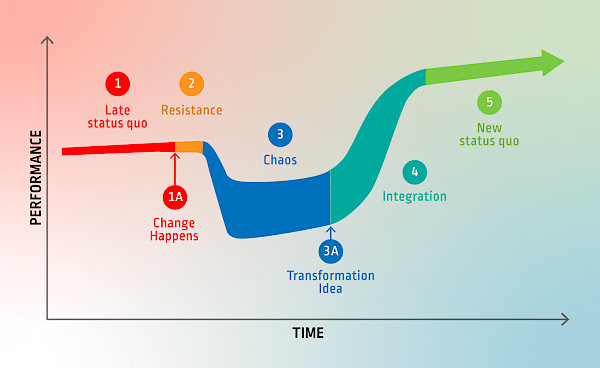Virginia Satir Model of Change: A Practical Application
One of the models in PMBoK 7 is Virginia Satir Change Model. I recently saw an application of this model in the software company I am currently employed with.
Context
Since the Covid-19 spread throughout the world, there has been a rise of Remote Jobs in the Information Technology world. This rise has increased the ratio of software engineers who desire to do remote work; as the methods and means to find and get a remote job are now easily and freely available via the WWW. This increase has led certain software companies to remodel their perspectives and move away from their traditional approach of in-house or co-located workforce concepts.
In 2023, after the pass of Covid-19, many employees have found remote work and are trading their 9-5 jobs with freelancing or work from home. Many a employees, whom I had a discussion with, said that they mentioned flexible working hours as one of the reasons for resigning with their current employers. This trend is on the rise in some of the software companies in Pakistan.
Case In Point
Looking at this issue from the institutional perspective, the software companies are now inclined to allow work-from-home opportunities to their employees. This is a perfect example of Virginia Satir Model of Change. This model has the following steps:
- Late Status quo
Teams have been working in co-location since a long time. No one was willing to work from home, or most people did not see any avenue to working from home; expect to work as freelancers. - Resistance
Covid-19 introduced an element of Work from Home. The closing of certain institutions around the world and remote availability of resources (part time and unemployed due to the Covid-19 restrictions) create a Foreign Element (previously unknown to the wider software community in Pakistan). - Chaos
After Covid-19, the boom of new recruitment agencies and availability of a big pool of jobs led the experienced software engineers to work at their own terms. The word of mouth within the Whatsapp communities and the Social circles exacerbated the Chaos and regular 9-5 job holders also started to look for work-from-home opportunities or Remote Work altogether. The number of job resignations in our IT company also stacked and most of those stated they found a Remote Job to work with. - Integration
To move away from this chaos and to retain the performance levels of the Teams as well as the Company (overall), the HR department introduced a new concept of hybrid work environment. This entailed working one day from home (on a trial basis).
Although the company had allowed work-from-home during the Covid-19 days, however, this time the terms and conditions of this Work-from-home policy were quite strict and clearly mentioned that the company might revoke this policy if there were any performance concerns raised at any level. Apparently, the company management does not seem aligned with the work from home culture. Though, time will tell what will happen in the future of this WFH policy at the end of December 2023 (the deadline for the trial period). - New Status quo
We are still at the Step-4 in the Virginia Satir model and will need to see and review what happens next. From an employee perspective, this is a good initiative, especially for day-scholars or people from other provinces. I am not yet sure if this policy will become the New Status Quo because the Senior Management in the company can modify its clauses at their discretion at any time.
